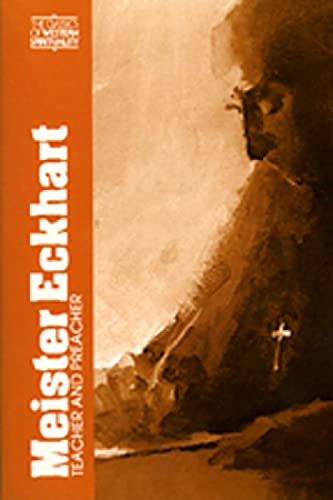Sayings Parallels: A Workbook for the Jesus Tradition
Written by John Dominic Crossan Reviewed By Craig L. BlombergDo the canonical gospels accurately reflect the original sayings and teachings of Jesus? An important consideration in any attempt to answer this hotly-disputed question is the presence of numerous apocryphal parallels to the gospel tradition along with the ‘agrapha’ (sayings not found in the NT but attested elsewhere). Commentators have always recognized the presence of apparent contradictions among gospel parallels within the Christian canon, but only in recent years have many of the apocryphal documents been discovered or made easily accessible, so the complexity of choosing among a large diversity of portraits of the historical Jesus is not as well-known among non-specialists. Dominic Crossan, Professor of Religious Studies at De Paul and author of numerous books and articles on the parables and other sayings of Jesus in light of recent hermeneutical and literary fashions, now offers a new synopsis which can go a long way toward making this complexity apparent, while at the same time providing an important and convenient tool for analysing the Jesus tradition in its many forms.
Crossan chooses to treat four of what he believes are five main categories of units of material in this situation—parables, aphorisms (broadly defined as all non-narrative sayings), dialogues and stories, leaving to one side the specific form ‘miracle story’ as worthy of a separate study in its own right. Under each of the four headings Crossan begins with the NT gospels in their canonical order and proceeds through a variety of extra-canonical literature, including papyrus fragments, the largely Gnostic Nag Hammadi corpus, the Apostolic Fathers, and patristic citations of other apocryphal gospels no longer extant, printing in turn each text which he believes falls under that particular heading, with potentially variant forms of the teaching contained in that text juxtaposed in parallel columns. Asterisks appended to pericope titles indicate the presence of the same teaching in diverse genres. Cross-references and indexes make individual passages easily locatable. A given set of parallels is generally presented only once, unless Crossan believes part or all of it fits under more than one heading.
The value of Crossan’s format and contents should be self-evident, inasmuch as no one else has compiled as many parallels, quoted in full, and as attractively laid out as this workbook has. Students who have not carefully studied the Gospel of Thomas, Apocryphon of James or Dialogue of the Saviour may be surprised to learn how much relevant comparative material appears in them. A special strength of Crossan’s format is his inclusion of a generous amount of contextual material for many of the sayings, so that one may better appreciate the use of a given saying in a particular document. The use of bold type to highlight the parallel saying(s) in each passage makes comparison of lengthy pericopes much more manageable.
There are, however, several anomalies. To begin with, most of Matthew’s five main ‘sermons’ of Jesus (Mt. 5–7, 10, 13, 18, 24–25) are minutely dissected (as in most synopses) while John’s longer discourses are only minimally subdivided into shorter units. Crossan admits that this is due to the lack of parallels for a much larger percentage of John’s material (p. xiv), but since this is not his criterion for establishing the limits of other passages, an inconsistency remains. This makes it look as if Matthew’s and John’s compositional techniques were quite different, an interpretation which may or may not be true but which must be defended rather than presupposed. Second, the early dates which Crossan suggests for many of the apocryphal writings (usually in dependence on Harvard professor Helmut Koester) represent an extreme end of the scholarly spectrum and reflect an incautious optimism as to the possibility of recovering independent and even authentic sayings of Jesus from outside the canon (although Crossan commendably refrains from elaborating his views, amply documented elsewhere, in this particular work). Third, some categorizations should perhaps be rethought. Why are several of Jesus’ parables repeated in either the stories or dialogues section while others of identical form are not? Is Lk. 17:37 par. really a full-fledged dialogue? If so, many other brief question-and-answer interchanges should have been included. In what way is the Lord’s prayer (Mt. 6:9–13 pars.) a story, when most of the rest of Jesus’ sermonic teachings are not?
A few inclusions are puzzling (e.g. several references from 2 Esdras, which does not fall into any of the categories of literature Crossan defines in his introduction), as are several omissions—the version of the parable of the lost sheep in Gosp. Truth 32 (apparently this entire apocryphon was excluded from consideration, but many scholars find it at least as old as the other Nag Hammadi documents considered), the saying about the tree being manifest by its fruit in Ign. Eph. 14, or the Pauline parallels to the Sermon on the Mount in Rom. 12:14–21, to Jesus’ woes in 1 Thes. 2:14–16, and to the eschatological discourse in 1 Thes. 4:16–17. The use of bold type is also occasionally inconsistent. Why, for example, should the saying about Jesus’ baptism in Mk. 10:38b par. be highlighted but not the parallel saying about his cup in v. 38a pars.? Why is Barn. 4:14b in dark type but not its exact parallel in Mt. 22:14? A few parallels, finally, seem so remotely related to the passages with which they are aligned that their usefulness seems suspect (e.g. Dial. Sav. 65–68 linked with Mt. 11:28–30; 2 Clem. 12:1–6 with Mt. 18:3; or Lk. 13:22–29 with Mk. 8:5–13).
These minor concerns in no way overturn the generally favourable verdict which Crossan’s compilation otherwise elicits. We may hope that the editors of the Foundations and Facet series, of which this work forms a part, will produce sequels covering those portions of the Jesus tradition which have not been treated here.
Craig L. Blomberg
Craig L. Blomberg
Denver Seminary
Denver, Colorado, USA







